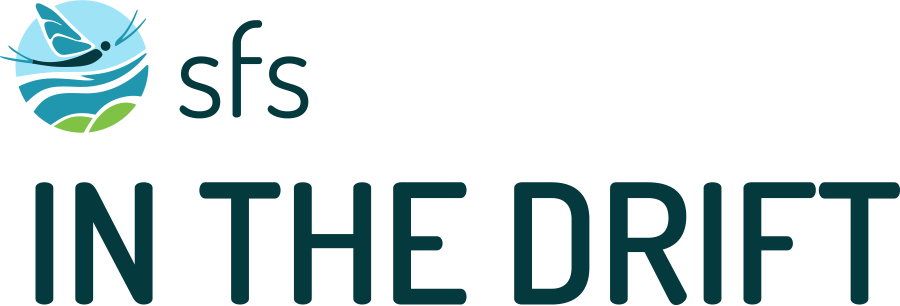
In the Drift: Issue 34, Spring 2019
In this issue
- FPOM - short news and resources
- Last minute meeting info
- Meet a Member - 5 SFS members you might not know
- Dear Nick - advice from Nick Aumen
- Freshwater Science Article Spotlight
- Dr. Nancy Grimm selected to National Academy of Sciences
- SFS hosts WOTUS Webinar
- Early Career Travel Grants
- Obituaries
Dear Society for Freshwater Science,
Spring is here and the SFS annual meeting (#2019SFS) is just around the corner. Catch up today on everything going on in the Society, including last minute meeting info and quick tips to improve your presentation.
I would like to thank Tracey Anderson, Nick Aumen, Mary Freeman, Galen Holt, Michelle Kelly, Stephanie Strachan, and Iain Phillips for contributing to this issue. Charles Riddle, Alan Steinman, Dean DeNicola, Gary Lamberti, Stan Gregory, and J.D. McIntire provided heart-felt obituaries.
Enjoy,
Ross Vander Vorste, editor
VanderVorste.Ross@gmail.com
FPOM
SFS news and resources collected from "the drift"
- A new Making Waves podcast hosted by Dr. Erin Larson with Dr. Jake Zwart and Dr. Arial Shogren about the WikiProject Limnology and Oceanography
- Stay Fresh! a compilation of new research in freshwater sciences
- Classifieds: job opportunities and workshops in freshwater science
Last minute meeting info
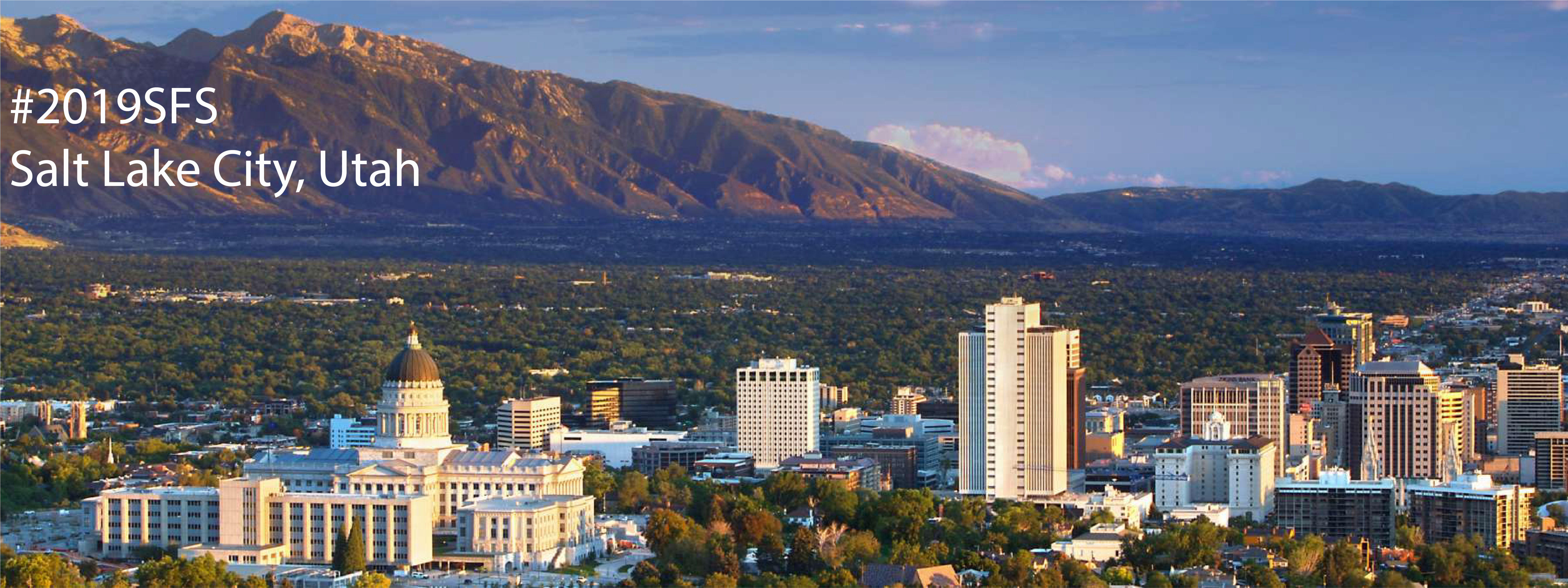
![]() Meeting Schedule
Meeting Schedule
![]() Presenter Info
Presenter Info
![]() Lodging
Lodging
![]() Transportation
Transportation
![]() Area Attractions
Area Attractions
Meet a Member
Introducing 5 SFS members that you might not know
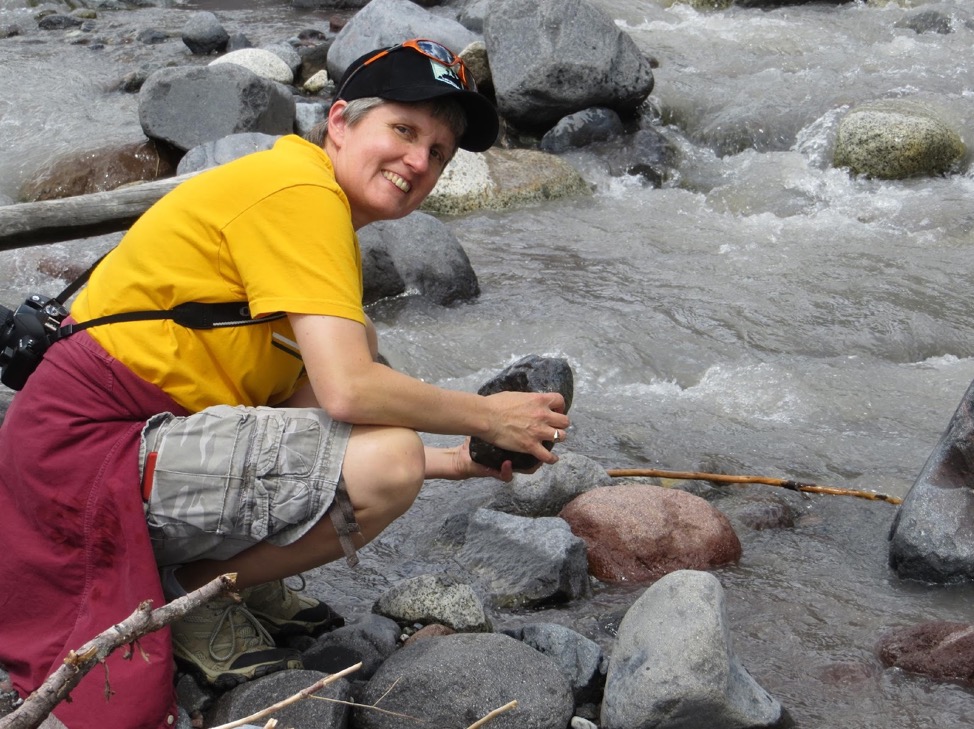
Dr. Tracey Anderson
Associate Professor
University of Minnesota Morris
Question 1: What is your field or topic of study?
When I am not teaching, I study macroinvertebrates and organic matter processing in prairie pothole lakes and agricultural streams in Minnesota.
Question 2: Summarize your current and past roles.
I did graduate work at the University of Kansas and Oregon State University before joining the biology faculty at the University of Minnesota Morris, where I teach freshwater biology, entomology, introduction to paleontology and other courses for biology and environmental science majors. I also conduct research on macroinvertebrate ecology with undergraduate students.
Question 3: What is something you are passionate about related to freshwater science (or not)?
I value connecting life history information with the macroinvertebrates that occur in my research sites and hope that I pass an appreciation for that knowledge on to my students.
Question 4: Which scientific paper, book or other media has inspired you?
Bill Matthew’s 1988 paper, “North American prairie streams as models for ecological study” was an important paper for me early in my career. It made it clear to me that interesting research in stream ecology could be done anywhere, not just in the mountains or in forested streams.
Question 5: Where can we find out more about your science?
I don’t maintain a website, but you can contact me directly (anderstm@morris.umn.edu) to find out more about what I do.
Question 6: How long have you been a member?
My first NABS meeting was in Tuskaloosa, AL in 1988 and I have been a member and attended most meetings since then.
Question 7: Will you attend the SFS meeting? Where can we expect to find you?
I’ll be at the meeting in Salt Lake City this year. You can find me in sessions on teaching and macroinvertebrate ecology.
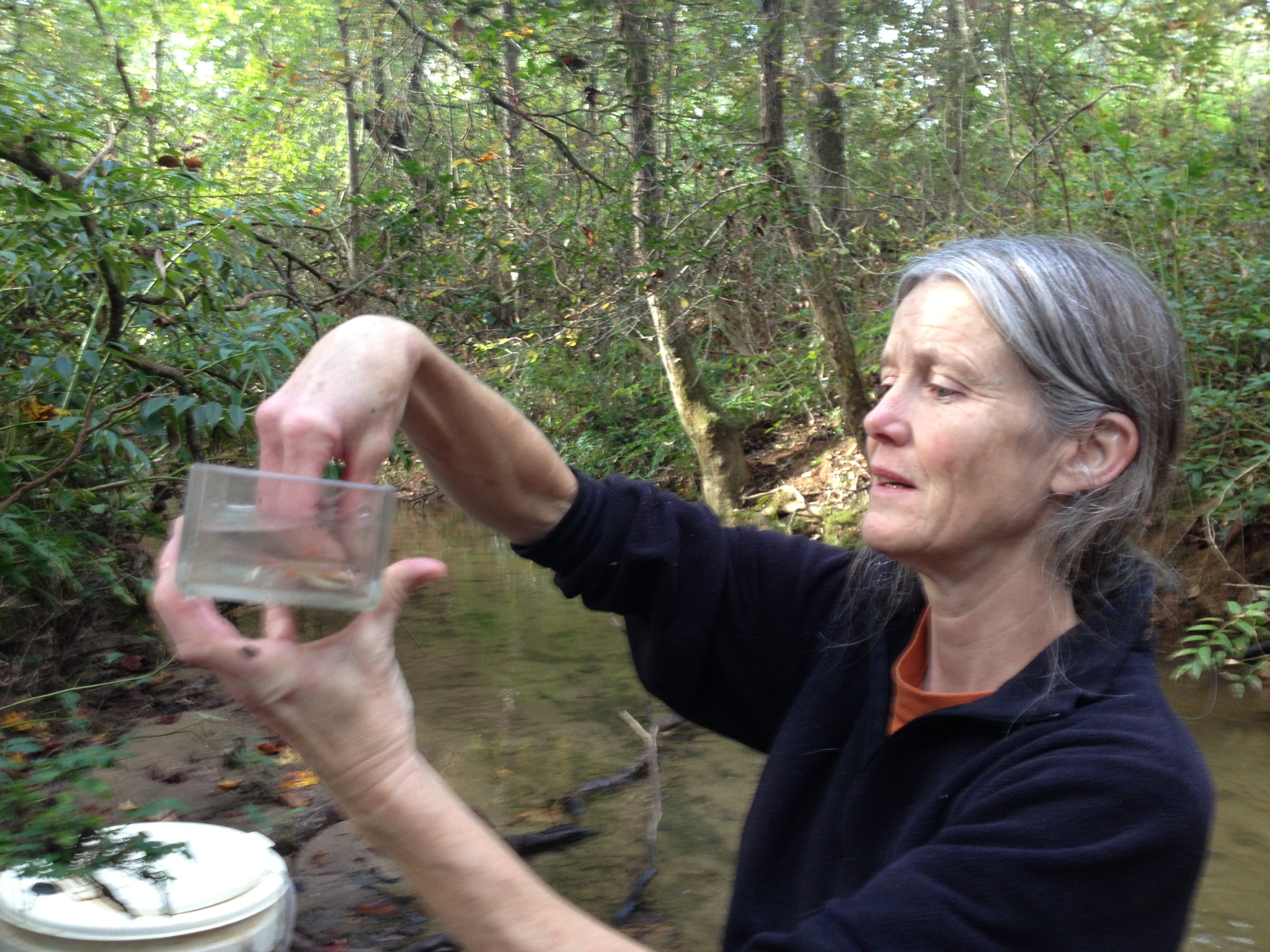
Dr. Mary Freeman
Research Ecologist
USGS Patuxent Wildlife Research Center
Question 1: What is your field or topic of study?
I study the dynamics of populations – principally fishes – in streams and rivers, with the goal of predicting community changes likely to result from altered land uses, climate, and water management.
Question 2: Summarize your current and past roles.
I am a Research Ecologist with the U.S. Geological Survey’s Patuxent Wildlife Research Center, stationed in Athens GA. In the 1990’s, I worked with the U.S. Fish and Wildlife Service in Auburn, AL, on problems of hydropeaking effects on native fishes.
Question 3: What is something you are passionate about related to freshwater science (or not)?
Like many SFS’ers, I am captivated by the diversity and natural histories of freshwater organisms, and the ecological connections among them.
Question 4: Which scientific paper, book or other media has inspired you?
In my beginnings as an ecology student, J.B. Wallace and Rich Merritt’s “Filter-feeding Ecology of Aquatic Insects” and H.B.N. Hynes’s “The Ecology of Running Waters” inspired my fascination with flowing-water ecosystems. Much more recently, I am inspired by Marc Kéry and Michael Schaub’s book, “Bayesian Population Analysis using WinBUGS” to make better use of hierarchical models.
Question 5: Where can we find out more about your science?
https://www.usgs.gov/staff-profiles/mary-freeman?qt-staff_profile_science_products=0#qt-staff_profile_science_products
Question 6: How long have you been a member?
My first, fondly remembered, NABS meeting was in 1980, Savannah GA.
Question 7: Will you attend the SFS meeting? Where can we expect to find you?
Yes! I will present in the session “The environmental flow and water management nexus…” on Thursday afternoon, hang around posters # 9, 88, 167 and 192 (maybe not all at once), and attend many of the animal ecology sessions.
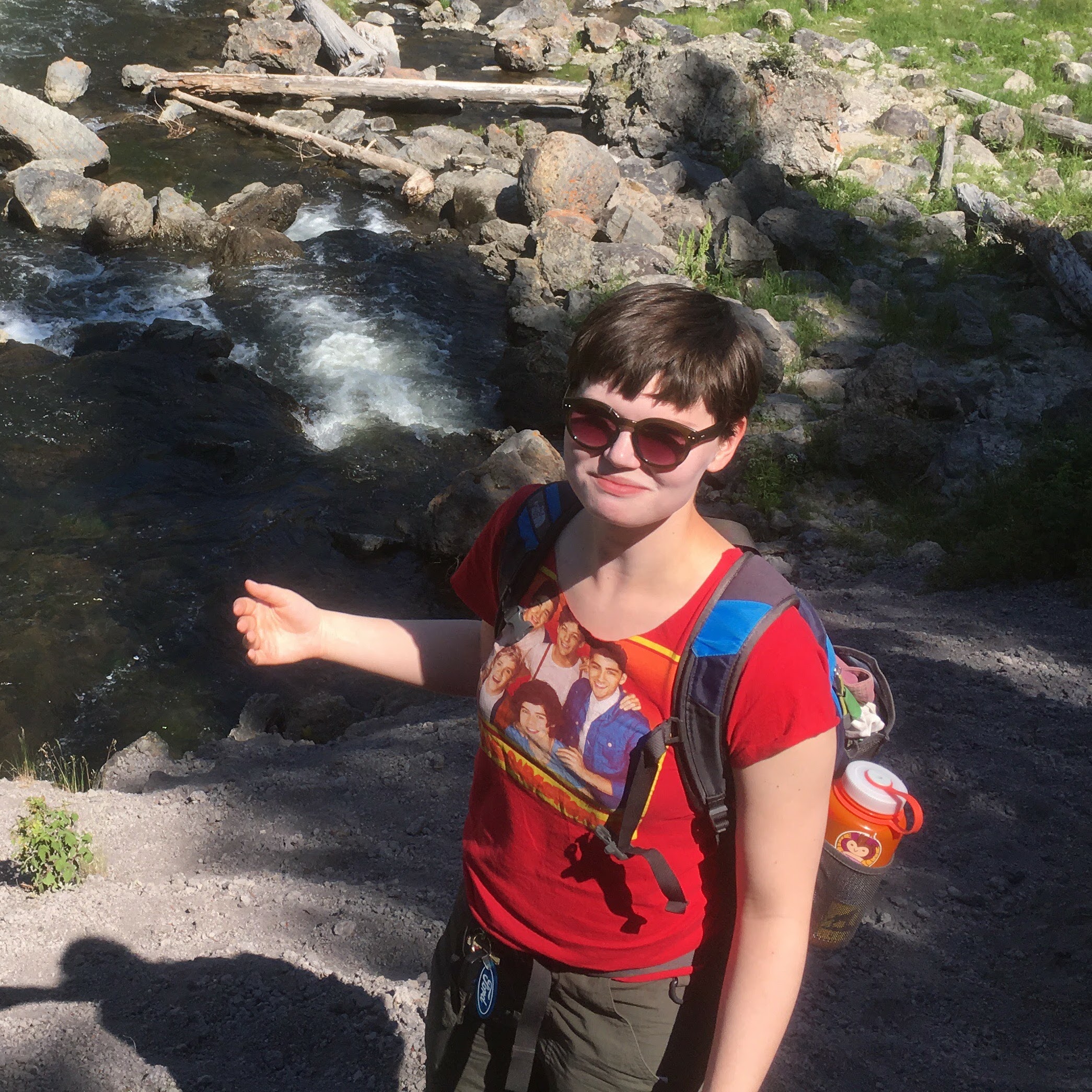
Michelle Kelley, M.Sc.
Recent Graduate
University of Kansas
Question 1: What is your field or topic of study?
I study nitrogen cycling in freshwater ecosystems, and I'm particularly interested in developing and distributing data science-driven analytical tools to help us better understand nutrient cycling.
Question 2: Summarize your current and past roles.
I'm currently a Masters student working with Amy Burgin in the Ecology and Evolutionary Biology Department at the University of Kansas, and I'm just on the edge of my thesis defense (one week from when I'm writing this, oof!). Before KU, I completed my BS in Environmental Engineering at Michigan Tech, where I worked with Amy Marcarelli's lab group and was bitten by the biogeochemistry bug.
Question 3: What is something you are passionate about related to freshwater science (or not)?
I've had some really interesting conversations about the political and often colonial underpinnings of conservation & ecology lately - discussions which were catalyzed by a talk at KU from Banu Subramaniam (check out Dr. Subramaniam's book Ghost Stories for Darwin) late last year, and have gotten me thinking about how we can better reflect this history (and present!) in how we teach our classes.
Question 4: Which scientific paper, book or other media has inspired you?
I read Jacques Cousteau and Frederic Dumas' The Silent World as a young kid and it totally blew me away; I think that was the first piece of science writing that really hooked me. I still love nature-y prose and poetry, and I'm totally predictable - my favorites are Mary Oliver and Robert Frost.
Question 5: Where can we find out more about your science?
My twitter handle is @michelleckelly_, and you can check out my website at https://michelleckelly.github.io/
Question 6: How long have you been a member?
My first meeting was in Raleigh, NC in 2017. I was so floored by how friendly, passionate (and downright goofy) all of these scientists were - people who I had built up in my head as very serious, pantsuit-and-heels type personalities!
Question 7: Will you attend the SFS meeting? Where can we expect to find you?
Yes! I'll be talking about my thesis work on coupled nitrate uptake and river metabolism. You'll find me near the coffee table (ha) or in the halls, frantically bouncing between sessions...
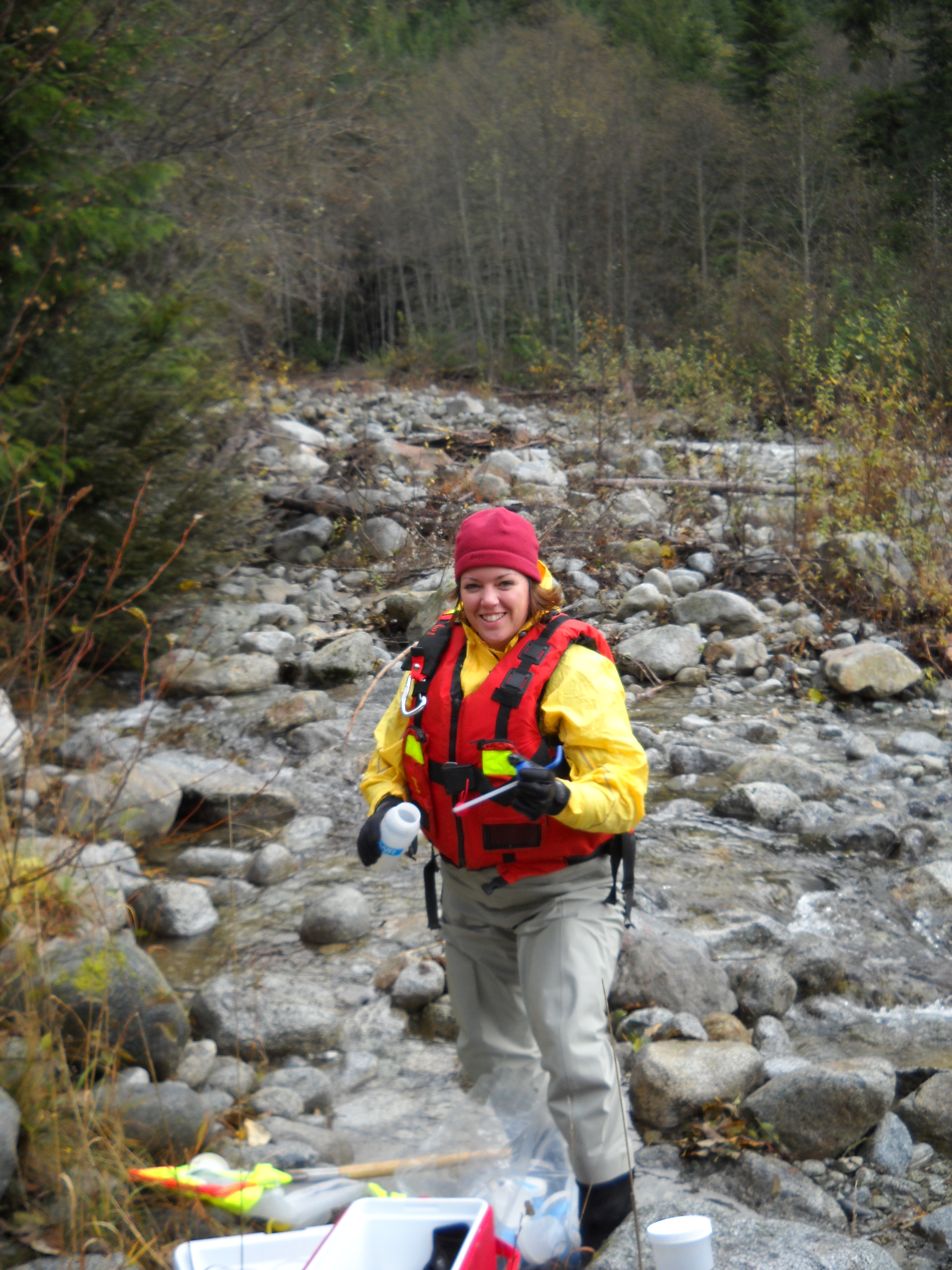
Stephanie Strachan, M.Sc.
Environmental Monitoring Scientist
Environment and Climate Change Canada &
Canadian Aquatic Biomonitoring Network
Question 1: What is your field or topic of study?
My field of study is freshwater ecosystem health, biological monitoring and assessment.
Question 2: Summarize your current and past roles.
I work for Environment and Climate Change Canada as the biological monitoring lead in western and northern Canada for the Canadian Aquatic Biomonitoring Network (CABIN).
Question 3: What is something you are passionate about related to freshwater science (or not)?
I am passionate about data-sharing and how government organizations can collaborate with other non-government organizations and indigenous communities with an interest or mandate in freshwater assessment, especially in remote locations.
Question 4: Which scientific paper, book or other media has inspired you?
During my undergraduate degree, my program director pointed me to Rachel Carson’s “Silent Spring” which sparked my interest in environmental science. More recently, I have been inspired by Paul Hawken’s book “Drawdown: The most comprehensive plan ever proposed to reverse global warming”.
Question 5: Where can we find out more about your science?
Biomonitoring and assessment activities I am involved in can be found on the CABIN website https://www.canada.ca/en/environment-climate-change/services/canadian-aquatic-biomonitoring-network.html My government profile can be found here https://profils-profiles.science.gc.ca/en/profile/stephanie-strachan
Question 6: How long have you been a member?
I have been a member since 1996 and part of the SFS TCP Committee since 2003.
Question 7: Will you attend the SFS meeting? Where can we expect to find you?
I am excited to attend the 2019 meeting in Salt Lake City. I plan to attend talks related to bioassessment, environmental stressors, and modeling. You can also find me at the DNA metabarcoding workshop and the TCP committee meeting.
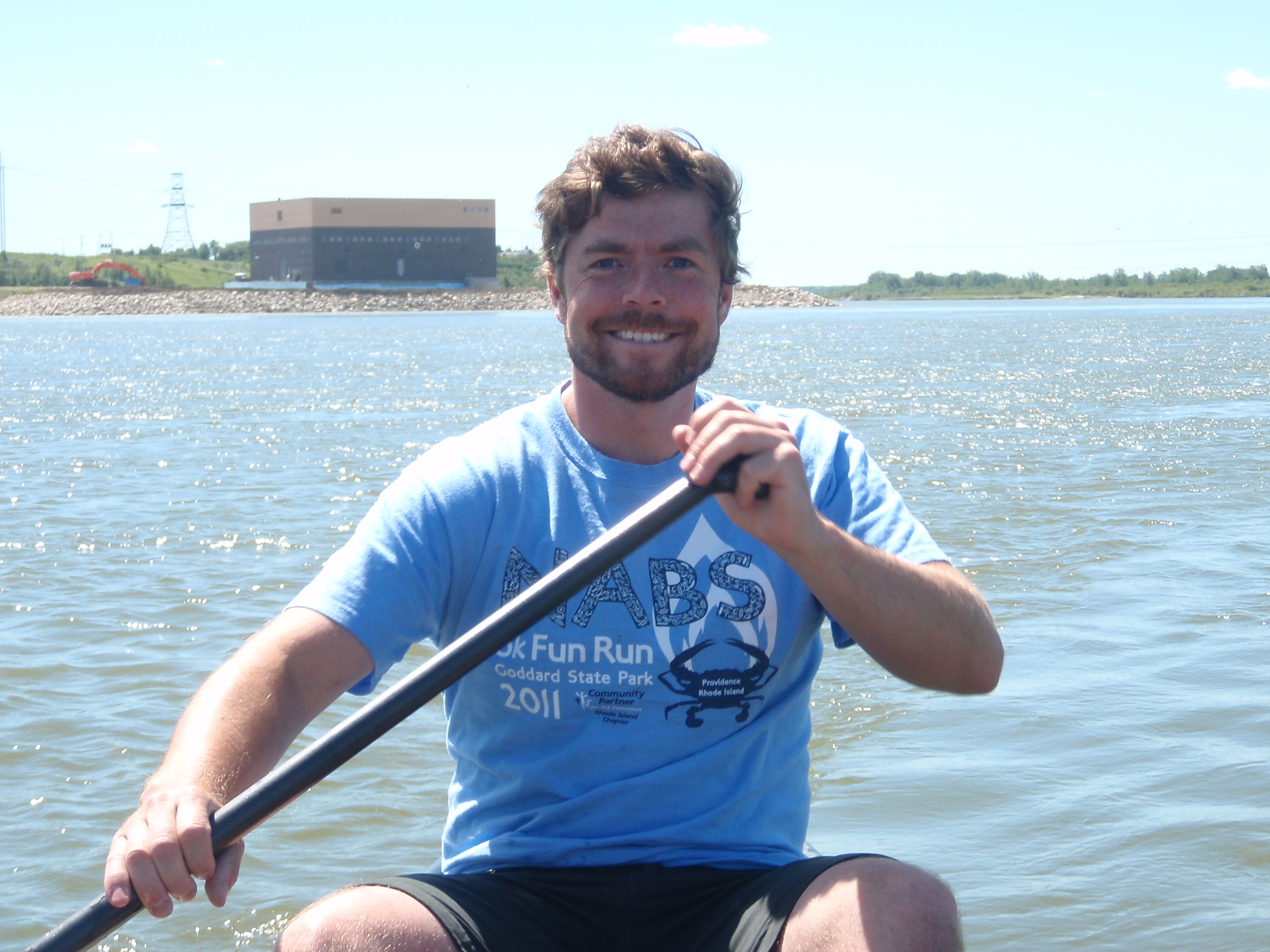
Iain Phillips, M.Sc.
Senior Aquatic Macroinvertebrate Ecologist
Water Security Agency of Saskatchewan
Adjunct Professor - Univ. of Saskatchewan
Director - Troutreach Saskatchewan NGO
Question 1: What is your field or topic of study?
My research focusses on building ecosystem health models and biomonitoring tools for the Northern Great Plains, although I often get distracted with interesting natural history and isotope projects along the way.
Question 2: Summarize your current and past roles.
I am currently the Senior Aquatic Macroinvertebrate Ecologist with the Water Security Agency of Saskatchewan, an Adjunct Professor at the University of Saskatchewan, and the Director of the Troutreach Saskatchewan NGO. I started working for the Water Security Agency right out of my Masters degree 13 years ago and haven’t looked back.
Question 3: What is something you are passionate about related to freshwater science (or not)?
Throughout all my research I am most passionate about studying the wealth of unexplored natural history and basic ecology questions underlying the ecosystem health models and biomonitoring tools in the Northern Great Plains.
Question 4: Which scientific paper, book or other media has inspired you?
I really dove into entomology in the first place after reading Bert Hölldobler and E. O. Wilson’s book The Ants early in my undergrad degree and have held a reverence for the ecology and behavior of insects ever since!
Question 5: Where can we find out more about your science?
Take a look through the Troutreach Saskatchewan website to learn about the projects we have ongoing and where we’re headed in the future! (www.troutreachsk.com)
Question 6: How long have you been a member?
I have been a member since 2009.
Question 7: Will you attend the SFS meeting? Where can we expect to find you?
I will be attending the SFS meeting in Salt Lake this year where you can find me presenting in the crayfish session or taking in some exciting crayfish talks!
Dear Nick - advice from Nick Aumen

DEAR NICK: I am preparing my talk for SFS 2019 and am worried about how to make it the best it can be. I am early in my career and have very little experience in developing an effective Powerpoint presentation and speaking to an audience. Do you have any tips that might help? -- Worried
Dear Worried:
Your concern is a common and important one, not just among early career scientists, but across the career spectrum. This topic is popular and was the subject of my first column in May 2017, and that advice still is relevant. Many undergraduate and graduate science programs still do not include courses on effective communication of science. However, communicating science to other scientists, and at times to non-technical audiences, is likely to be an important facet of your career. Fortunately, there are many good sources of information online about communicating science, and there are more courses available than there used to be, including those outside of the academic environment.
With respect to your slides, remember that your presentation is about you and your science, not about your slides. Your slides should support your conclusions, but not make them. It is easy to fall into the trap of relying on your slides to make your points, rather than you making them directly to the audience. Keep your slides as basic as possible, including only the most essential data and figures. Rely more on photographs and illustrations than extensive text or bullets, and do not ever read from your slides. Reading your slides causes you to face away from your audience and to lose that all-important engagement with them. The most common problem is making each slide way too complex and busy, with too much information presented in small fonts and multiple insets that are impossible to read even from the front of the room. Count how many times you hear a presenter acknowledge to the audience that their slides are hard to read, and ask yourself why they used them in the first place!
Here are my recommendations for making an effective Powerpoint presentation.
- Don’t read your slides – speak to your audience, not to the screen.
- For a 12-minute talk, use no more than 15 slides, and preferably fewer.
- Minimize text and use photographs and illustrations that make your points.
- Never place multiple charts/graphs on one slide – that may be fine for print, but it simply does not work for a projected image in a large room (but notice how many times you see this type of slide at the meeting).
- Avoid fancy transitions, animations, and complex templates/backgrounds – they are distracting.
- Minimize white space – i.e., enlarge your content to use all available space in the slide frame.
- Make all text and numbers at least 28-point font.
- Use only Helvetica, Arial, or other sans serif fonts.
For your delivery, practice the presentation in front of someone who is not afraid to provide honest and positive criticism. Have them sit at the back of the room to make sure your slides are truly readable. Twelve minutes goes by incredibly fast, and it takes practice to refine your presentation to be concise and effective and to leave time for questions. Try making your practice presentation without slides! That is the true test to insure your slides are not making the presentation for you.
Put in enough preparation and practice time before the meeting, and you will arrive in a more confident frame of mind. Good luck and enjoy the meeting!
- Nick
Article Spotlight
By Ross Vander Vorste

Field biologist and theoretical modeler Dr. Galen Holt and the renowned ecologist Dr. Peter Chesson’s recent article in Freshwater Science explores a fundamental question in ecology, “How does the branching structure of river networks influence biodiversity within a watershed?”
When you look at a map, one of the most obvious features on the landscape is the branching network structure of river networks. River branching has long been associated with physical changes along rivers from their headwaters to mainstems. As rivers change in shape, gradient, and substrate, river branching allows dispersal throughout a network of diverse habitats by all types of aquatic organisms, from microbes to fish.
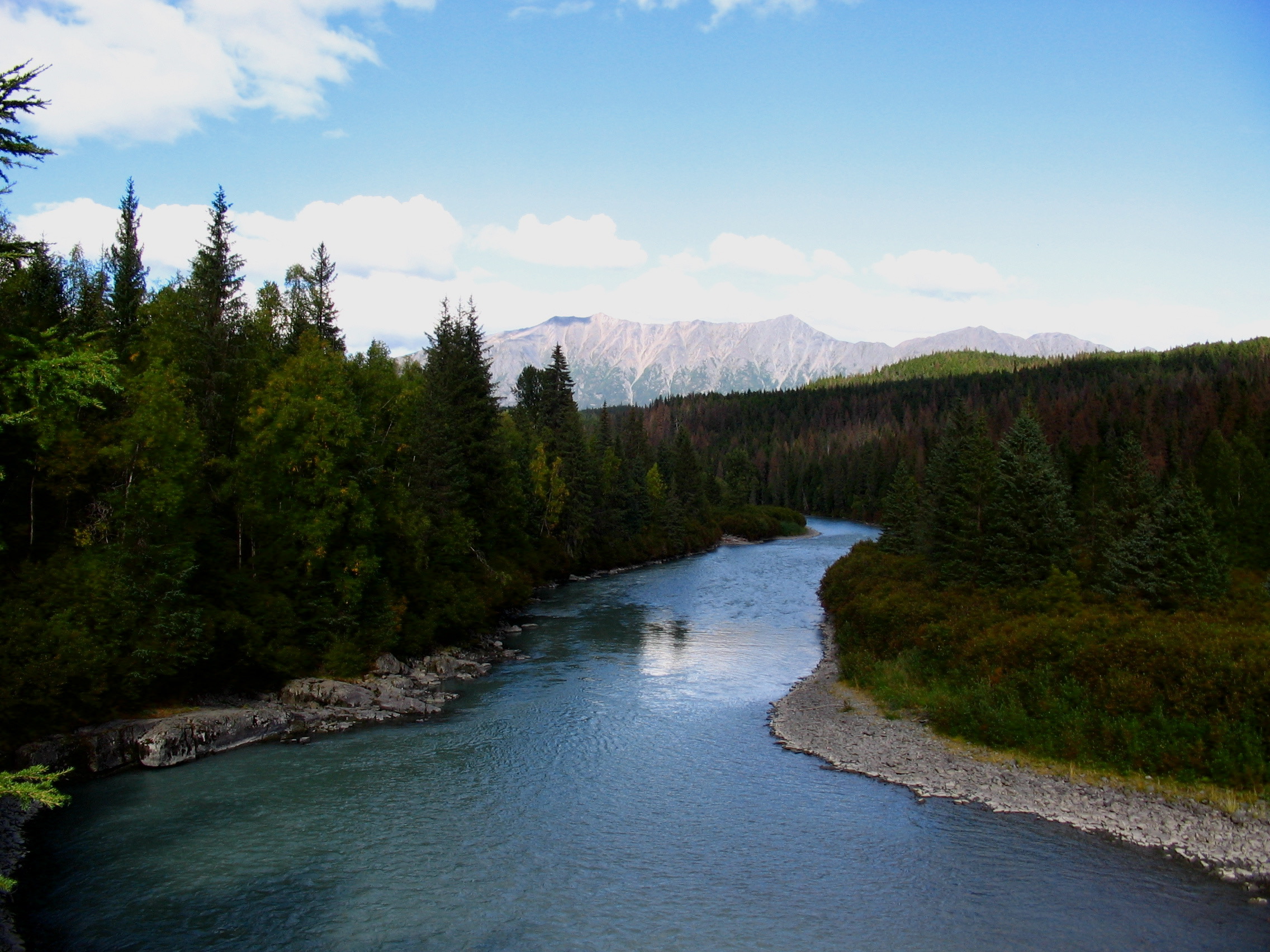
Sixmile River on the Kenai Peninsula, Alaska. Photo Credit: Galen Holt
Galen says that it may seem like the diversity of aquatic communities within an entire watershed is controlled by river branching structure, however, no one has distinguished the effects of branching structure on watershed-scale diversity independently from environmental heterogeneity. To address this issue, Galen and Peter created and built analytical and computer models that represented a river network, complete with thousands of unique habitat units with their own set of environmental characteristics.
Theoretical modeling was not something Galen thought he would be doing after entering the world of freshwater ecology as a field biologist. In the field, Galen noticed some of the obvious differences between biological communities inhabiting headwater streams and larger mainstem rivers. He then became inspired by the metacommunity framework in rivers through studies by Brown and Swan (2010) and Altermatt (2013). Since jumping fully into the field of modeling, Galen has published in The American Naturalist and Theoretical Population Biology on topics including species coexistence and biodiversity maintenance.
Galen and Peter uncovered some important insights using models to determine the role of branching structure in structuring communities. First, changing the branching structure in models while keeping the degree of environmental heterogeneity within a watershed constant did not have a strong influence on species diversity. Second, while branching can control the connectivity of local habitats by facilitating dispersal, these effects are minimal compared to the role of environmental heterogeneity in structuring communities. Although branching is inherently linked to environmental variation, the different ways that branching shapes river networks has little to do with the diversity of species that you will find within a watershed.
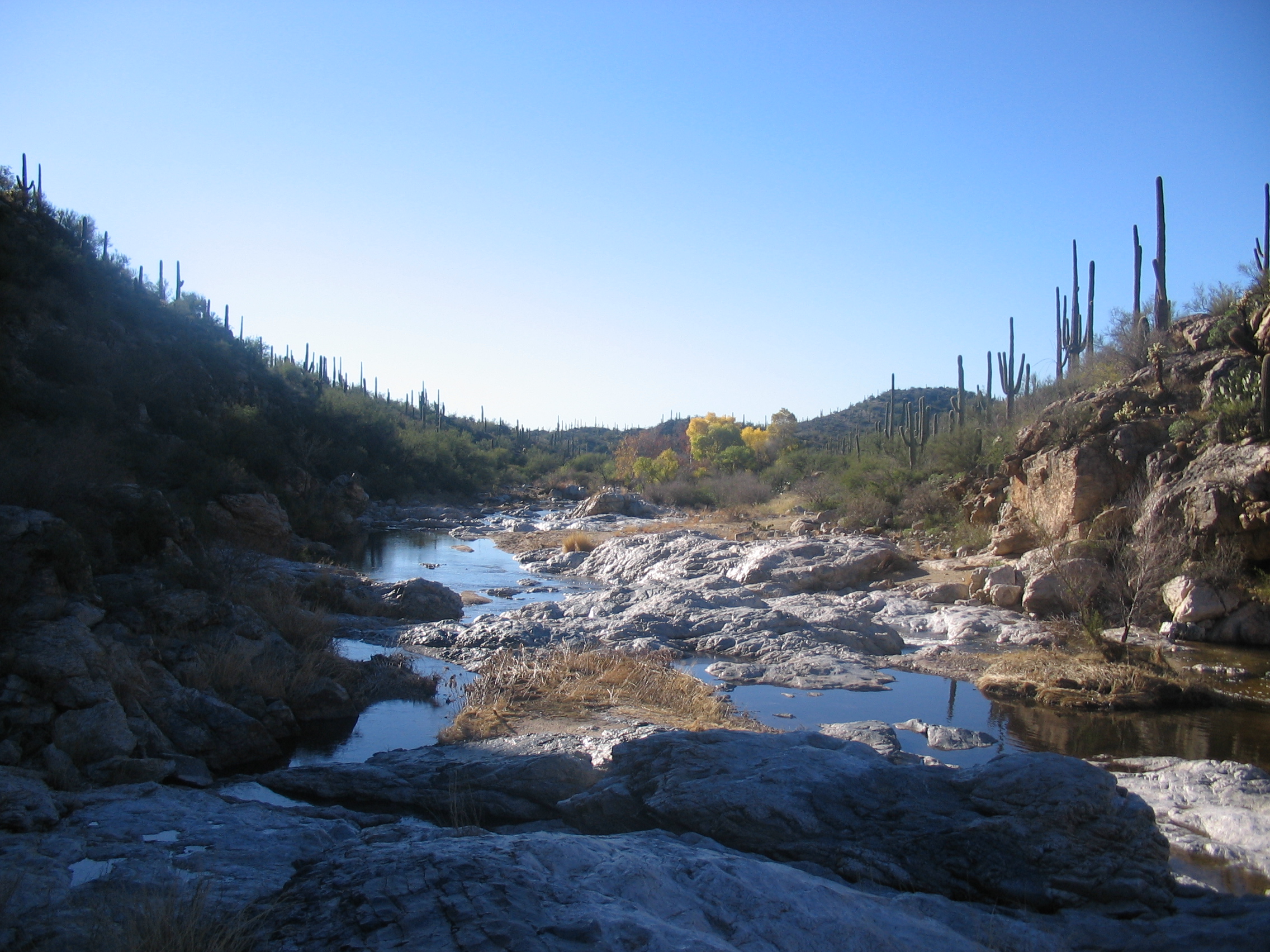
Tanque Verde River, Arizona. Photo Credit: Galen Holt
Galen admits that modeling efforts simplify real-life ecosystems, and often ignore important aspects, such as life history strategies of taxa. In his new postdoctoral work in Australia, Galen combines his talents in modeling with his love for natural history to better understand species coexistence of stream invertebrates. With colleagues Wim Bovill, Rebecca Lester and Barbara Downes, Galen is currently investigating how environmental conditions influence competition of caddisflies throughout their egg, larval, and adult life stages.
As advice for budding or seasoned field biologists interested applying models to address their own research questions, Galen suggests starting to read paper introductions and text books to familiarize yourself with terms and techniques. Then he felt jumping in and learning as you go is one approach that was successful for him thanks to the tremendous volume of information available on StackExchange, a virtual library of coding questions and answers.
Congratulations, Dr. Grimm!
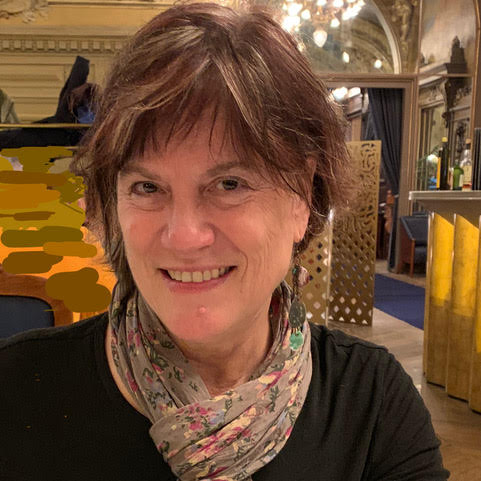
Nancy Grimm, long-time SFS member and 2019 SFS Fellow, has been elected to the National Academy of Sciences. Click here to read the full announcement from the National Academy of Sciences. Nancy was interviewed in a recent article by Arizona State University about her achievement. Click here to read Nancy's SFS fellow page from this year.
SFS responds to proposed changes to Waters of the US (WOTUS) rule
- Watch the webinar hosted by SFS President Dr. Jen Tank and Dr. Mazeika Sullivan
- Read SFS letter to the US EPA
Early Career Member?
Apply for a Travel Engagement Award by Wednesday, May 15th, at 5:00 p.m. (EDT).
Obituaries
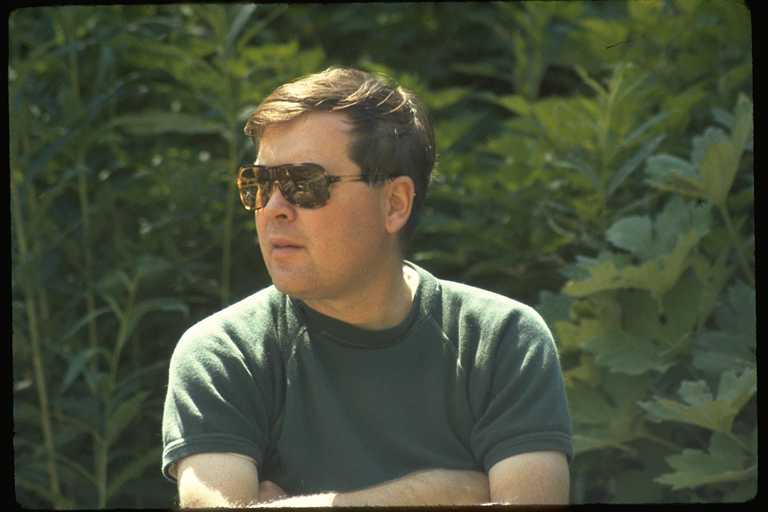
Charles David McIntire (1932-2019)
By Alan Steinman, Dean DeNicola, Gary Lamberti, Stan Gregory, and J.D. McIntire
Ecologist and phycologist Charles David (Dave) McIntire passed away peacefully on January 4, 2019, from complications from leukemia. He was 86 years old.
Dave’s life trajectory was anything but typical for an academic, ecologist, and phycologist. He was born in St. Louis, Missouri, in 1932, but his life’s passions went far beyond diatoms and systems ecology. When he was in sixth grade, he took up the alto saxophone and began his lifelong love of jazz music. In high school, Dave joined the musician’s union and a local professional band, after which he attended Southern Methodist University, receiving a degree in Business Administration, which he jokingly said later was mostly “monkey business.” Dave was a member of the SMU Mustang Band and in the summers began to play with a band at Yellowstone Park, developing a lifelong love affair with Yellowstone. After graduating SMU, Dave volunteered for the draft and eventually was assigned to a radar platoon and stationed with the 7th Army in Karlsruhe, Germany. His military life changed when he joined the 7th Army Jazz Band; Dave’s army stories were definitely not for the faint of heart.
After Dave was discharged, he moved to Corvallis to pursue a degree in Fisheries at Oregon State University. He continued on with a MS degree that involved management of fish ponds at OSU. During this time, he consulted with Dr. Harry Phinney, who helped him identify the pond algae. This was the beginning of Dave’s long relationship with Harry, who had a large impact on Dave’s life and career. A short time after finishing his master’s degree, Dave was informed by Harry that Dr. Charles (Chuck) Warren had just received a grant from the National Science Foundation to set up laboratory streams, and that the project needed Ph.D. students. Dave became Dr. Phinney’s student and was allowed to design his own specific experiments that were compatible with the overall objective of the project. The result was Dave’s pioneering research on how benthic stream metabolism was affected by environmental variables such as light, current, and temperature. It was during this period that Dave met his wife Carol, who worked at OSU.
After completing his Ph.D., Dave accepted a faculty position in the Department of Botany and Plant Pathology at OSU. He quickly developed his own research program and in 1967 obtained an NSF grant to investigate the distribution and abundance of the diatom flora in estuaries along the Oregon coast, which involved both marine mesocosms and field work. During this time, Dave developed a professional relationship with Drs. Ruth Patrick and Charlie Reimer at the Academy of Natural Science in Philadelphia in order to better learn diatom taxonomy. Rumor had it that Dr. Patrick tried to hire Dave during one of his summer visits, but he did not want to leave Oregon for the “urban jungle of Philadelphia”.
In 1970, Dave received a NSF Science Faculty Fellowship to spend a one-year sabbatical at the Center for Quantitative Science at the University of Washington. Here he audited courses on quantitative analysis, which ultimately led him to be one of the first ecologists to examine patterns in ecological communities using multivariate ordination techniques such as Principal Components Analysis. Also during his sabbatical, Dave used General Systems Theory to synthesize the results of his laboratory stream experiments into a mathematical model of periphyton dynamics in lotic systems. Funding from OSU’s involvement in the International Biological Program allowed him to eventually expand this into a larger model of the total stream ecosystem. The model explains fundamental dynamic inter-relationships and dependencies among processes that occur in lotic ecosystems. His publications in Ecological Monographs in the 1970s complemented the nutrient cycling models being developed by Jack Webster and Bernie Patten at Virginia Tech, and led to the nutrient spiraling concept that still permeates the field.
In the mid-1970’s, Dave research interests and funding returned to the sea, where he examined diatom communities and macrophyte productivity in Oregon estuaries with numerous graduate students. Students working on his coastal surveys were always amazed and intimidated to watch him demonstrate the use of water skis to move across the soupy mudflats to take diatom samples. His stories of falling face first into the intertidal mud always resulted in howls of laughter, with the loudest laughs coming from Dave himself. In the 1980’s and 1990’s Dave was involved in new laboratory stream work by the OSU “Stream Team” headed by Dr. Stan Gregory. These experiments were particularly focused on herbivory, and he used some of those data to further develop that aspect of his stream process model. Also during this period, Dave became involved a 10-year study of Crater Lake funded by the Park Service to provide baseline data for management purposes. His work focused on phytoplankton and mosses in the lake, as well as statistical analysis of the entire data set.
Dave’s ability to focus was legendary; the downside of his myopia was that other things tended to get forgotten or overlooked. Two examples spring to mind: on the first day in Corvallis for one of us (DD), Dean showed up at Dave's office door and Dave had no idea who he was, having completely forgotten he was getting a new student. And at a Halloween party one year, Gary Lamberti dressed up as another of the authors (AS), and Dave didn’t even realize it wasn’t Al! Despite these occasional oversights, Dave was a devoted mentor who gave his students his time and knowledge. He had little time for fools and less time for administrators, loved his OSU basketball despite having to sit “asshole to asshole”, and knew when to call it quits, as you “can’t get blood from a turnip”.
Dave had a dry and wry sense of humor. When the Stream Team was heading off to a NABS (at the time) conference on the east coast with a flight from Portland, Dave wisely decided to spend the night in Portland rather than drive early in the morning with the “sometimes unreliable” Stan Gregory and Gary Lamberti. Sure enough, Stan and Gary overslept and were horribly late for departure. Upon seeing Stan and Gary sprinting down the terminal, Dave was dutifully seated right outside the gate and nonchalantly remarked “I was just about to throw myself on the tarmac in front of the plane”.
Dave’s scientific and artistic talents were legendary among his friends and colleagues, and many of us coveted his extensive collection of jazz vinyl albums that was as diverse as his technical interests. Few realized that his art and science did not always blend as easily as it appeared. In his early days as an Assistant Professor at OSU, he also would travel regularly to Portland to play saxophone professionally in jazz clubs. Dave’s high standards for himself as an artist and scientist soon made this double life impossible and he had to choose. Luckily for stream ecology, he chose research and teaching, but art and music always remained a passion for Dave.
During field work, Dave constantly watched for his infamous “photo opportunities”. Dave’s retirement in 1994 freed him to pursue his lifelong love of photography full time. Dave was an accomplished landscape photographer, and his work has been exhibited in several shows, galleries, and books. He claimed that he enjoyed music and photography because they “represent a merger between an impressive technical component and a creative, emotional component.” Dave was a humble human being who never sought the spotlight, but those of us who were fortunate to work with him recognized his unique ability to merge creativity with technical skills, which resulted in his groundbreaking contributions to freshwater ecology.
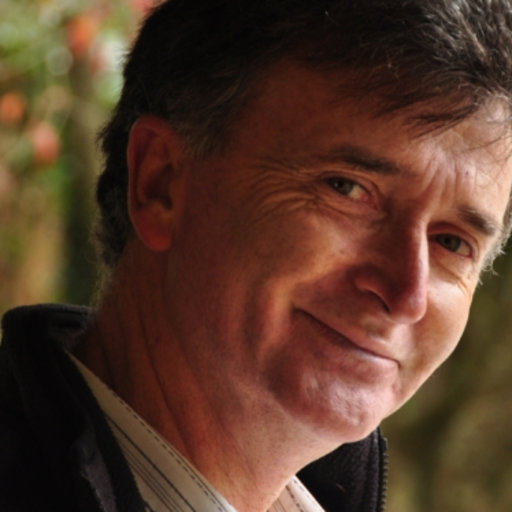
John Martin Quinn (1957-2018)
By Charles Riddle
Scientist and aquatic ecologist John Quinn, who has died aged 61, sometimes kicked off his presentations with self-penned ballads such as the Migrating Salmon Blues.
John, the Freshwater and Estuaries Chief Scientist at the National Institute of Water and Atmospheric Research (NIWA), dedicated his life’s work to the health of this nation’s rivers. As such, he was pivotal in the drive to clean them up.
As might be expected, at least in the early days, the gifted musician and scientist sometimes could find himself facing an audience of farmers or foresters wary of the implications of his message about the impact of dairy intensification and forest harvesting on waterways.
But John liked to play guitar, write songs, and was an active member with other scientists of a folksy-pop band called the Vadose, named after the subterranean part of a river.
“Logic and Powerpoint can go so far,” he said some years back. “But I’ve found a bit of melody and quirky humour can help win over a tough audience."
In fact, John became well-known in the scientific community both here and overseas for always taking his guitar, and singing, at scientific conferences, son Jacob said.
It is a measure of the success of his work that John, a Niwa scientist for more than 35 years, lived to see a material change in attitudes to rivers.
A man of particular integrity who was, according to Jacob, “bloody-mindedly honest”, John was instrumental in improving the health of NZ rivers and waterways and worked closely with successive governments advising them on freshwater science issues. He had an impressive publication record.
Talking to Dave Hansford of NIWA in 2012, John said farmers, especially now, were much more aware of the impact of their practices. “There’s lots more riparian management, and many fewer dairy shed effluent discharges to streams. Our information gives people confidence to change the way they do things, which is an important part of what scientists do.”
Born in the Waipukurau into a large family, the son of a rural GP, John learned to swim in the Tukituki River. For a while it seemed he might follow in his father, Tony’s, footsteps, but adventurer and marine conservationist Jacques Cousteau intervened.
John, who was a life-long surfer who liked nothing more than to hang at the Otahu surf break at Whangamata, took up diving while completing his BSc Honours degree at the University of Otago and was interested, for a while, in a career in oceanography, but somehow was always drawn back to rivers.
“It seemed to me that fresh water offered more opportunities to interact with people, and I’m fascinated by the land/water interaction – I’ve always been interested in trying to resolve the problems of land use and fresh water.”
During the bullish days of Think Big, John thought small – sometimes microbial. “Unlike others, my interest was not in damming rivers but, in those days, a career as an aquatic ecologist was unheard of.”
John began his scientific career in 1980 with the then Water and Soil Division of the Ministry of Works, before gaining a scholarship to do his PhD at Massey University from 1982 to 1985. He then joined the then Water Quality Centre of the Ministry of Works, which became part of Niwa in 1992. John’s PhD focussed on the waterway that was to become stigmatised as one of New Zealand’s most polluted: the Manawatu River.
In those days, John said, treated sewage, as well as dairy factory and meat works effluent, was piped directly into the river which laboured, brown and sluggish, through vast tracts of sewage fungus. Fish routinely died from oxygen depletion.
In the arcane language of science, John’s research interests included nutrient attenuation within rivers, understanding and mitigating the effects of forestry and pastoral agricultural land uses, and the rehabilitation and restoration of streams and lakes.
Interviewed for NIWA’s website last year, John said people sometimes have rose-tinted glasses when they compared the rivers of their past with the current situation.
“Forty to 50 years ago a lot of rivers had serious pollution from very poorly treated point source sewage and industrial discharges. These are now largely cleaned up.”
His research records, John said, showed general improvement for contaminants such as E. coli, but more streams continued to deteriorate in nitrate levels, which mainly travelled via groundwater.
He was unfazed by the size of the challenge insisting there was a real willingness to get the problem sorted while acknowledging the “juggernaut of development”.
John recognised that while people wanted healthy rivers, no-one was going to close down agriculture or remove hydro-electric dams that interrupt flow and paved cities that flood waterways.
In 2012 John won NIWA’s Applied Science Excellence Award for using freshwater research to guide policy-makers in management of water issues.
The citation noted that his role in helping freshwater policy and resource management was enviable.
“[It] includes applying 20 years of research into forestry impacts on streams to help develop New Zealand’s environmental standards for forestry, being lead author of the Waikato River Scoping Study; and helping work out competing interests in water storage and irrigation in Canterbury, Southland, and Waikato.”
In 2016 John’s team took on the boldest attempt so far in New Zealand to test how well a river meets everything expected of it when Niwa worked with the Waikato River Raupatu Trust to compile a “report card” on the Waikato and Waipa rivers for the Waikato River Authority.
The Report Card project was recognised as internationally unique in being underpinned by indigenous and community values, rather than being purely science driven.
John, who led the project, said assessing catchments holistically was becoming best practice internationally, and he anticipated the process for evaluating the Waikato and Waipa rivers would create a benchmark and a focus for future restoration.
John was diagnosed with leukaemia this year having survived an aggressive prostate cancer in his mid-50s. He spent four months in treatment, still working from his hospital bed. An artist who worked in oils, he spent some of this time sketching each of his five grandchildren.
When the regular treatment options were exhausted, John was put on an experimental drug trial that had had some limited success in the UK. Asked by his doctors at one point whether he would like them to increase the dose earlier than scheduled, John said no. A scientist to the end, he told them to stick to the same regime as that used in the UK so as to provide a robust comparative data point.
When it became clear the cancer would beat him, he took medical retirement.
In his last email to his colleagues he wrote his illness had obviously involved coping with his mortality.
“The things I’ve found useful from my reading and reflection include that the inevitable letting go of life is easier for those who have lived purposefully, had connected relationships, had ‘ripple effects’ on others, and built a legacy that lives beyond them.”
NIWA's General Manager (Strategy) Dr. Bryce Cooper said everyone knew John knew his stuff. “John’s deep knowledge of river systems, his generosity of spirit to share that knowledge, and his skills at communicating complex science to others stand out for me.”
A few weeks before his death the president of the New Zealand Freshwater Sciences Society, Marc Schellenberg, flew from Dunedin to bestow his organisation’s highest honour, the society medal, on John.
About 100 friends and family gathered on the Waikato River’s Wellington Street beach in Hamilton East last week to celebrate John’s life. A public memorial service will be held at the Gallagher Academy of Performing Arts at the University of Waikato on Saturday, February 2, 2019 at 2pm.
John is survived by his wife Shardell; children Jacob, Beth and Gabbie; and grandchildren Ned, Sybil, Allie, Pippa, Priya and her soon-to-be-born sister; and by his siblings Marianne, Jane, Tony, Helen, Cathy and Anna.

